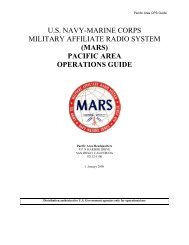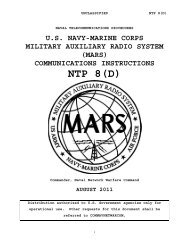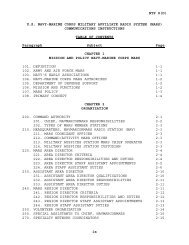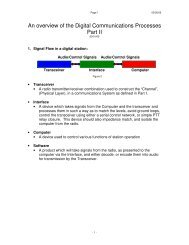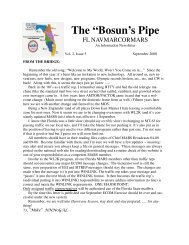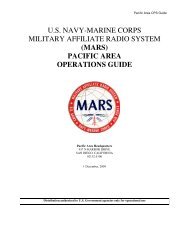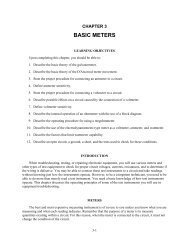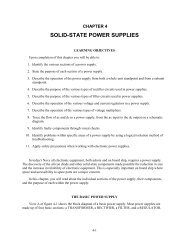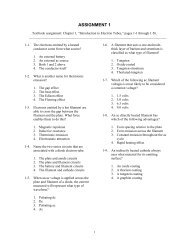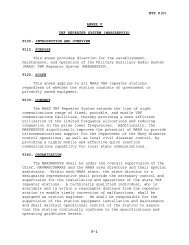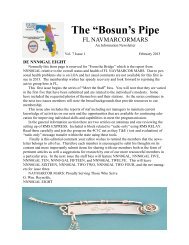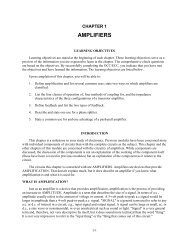Create successful ePaper yourself
Turn your PDF publications into a flip-book with our unique Google optimized e-Paper software.
You can see from the analysis that the most consistent control of plate current takes place over thelinear portion of the E p - I p curve. In most applications, electron tubes are operated in this linear portion ofthe characteristic curve.Plate Resistance (R p )One tube parameter that can be calculated from values on the E p - I p curve is known as plateresistance, abbreviated as R p . In a properly designed electron tube, there is no physical resistor betweencathode and plate; that is, the electrons do not pass through a resistor in arriving at the plate. You mayhave wondered, however, why the variable dc voltage source of figure 1-12 didn't blow a fuse. Doesn'tthe plate circuit appear to be a short circuit-a circuit without a load to limit the current?The fact is, there is a very real, effective RESISTANCE between cathode and plate. It is not lumpedin a resistor, but the circuit may be analyzed as if it is. The plate resistance of a given tube, R p , can becalculated by applying Ohm's law to the values of E p and I p . Figure 1-14 is a typical diode E p - I p curve.The plate resistance has been figured for R p under three different conditions, as follows:Figure 1-14.—The E p - I characteristic curve for a diode.Remember that 1 mA = .001 ampere; therefore 40 mA =.040 ampere.Solution:The other two indicated values of R p were figured in the same way.1-16



